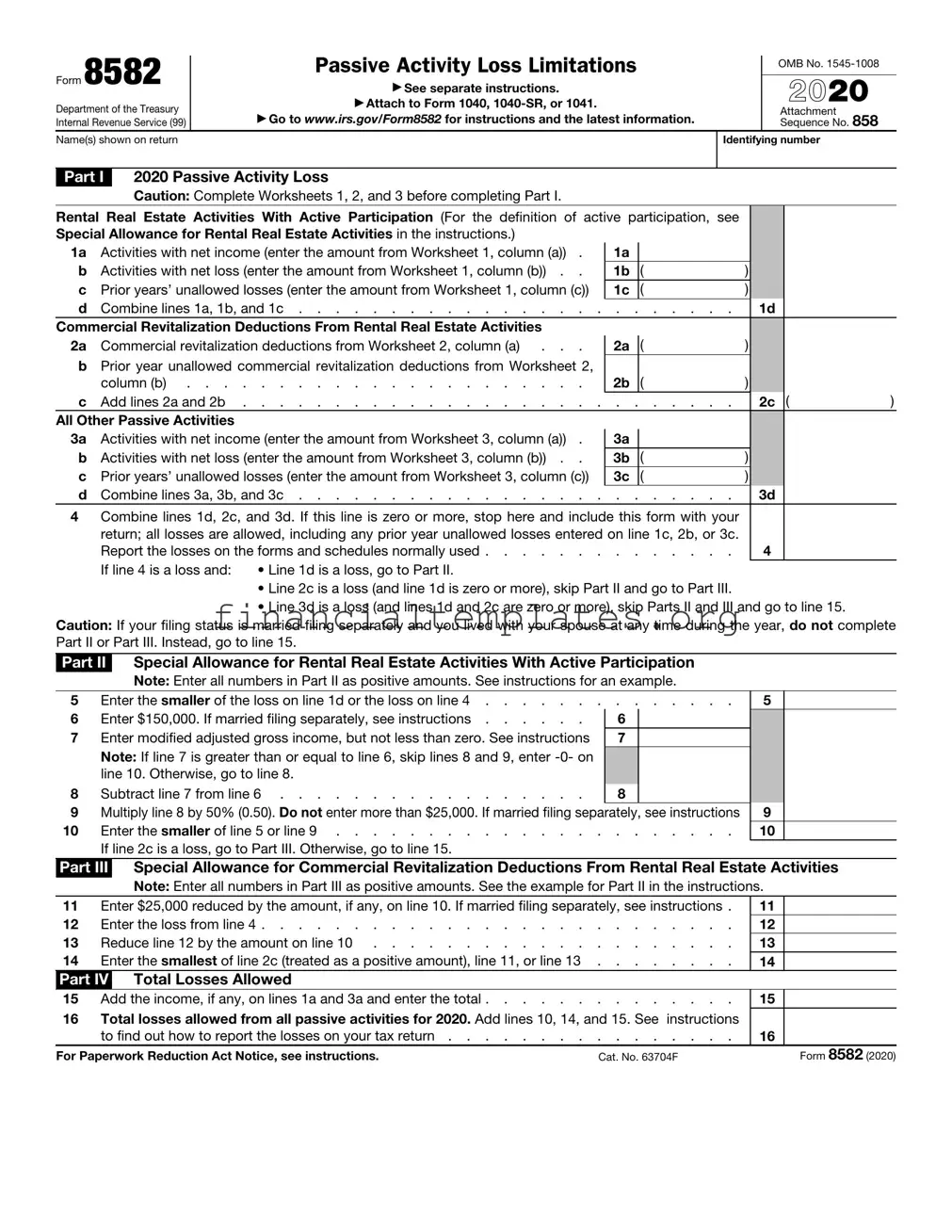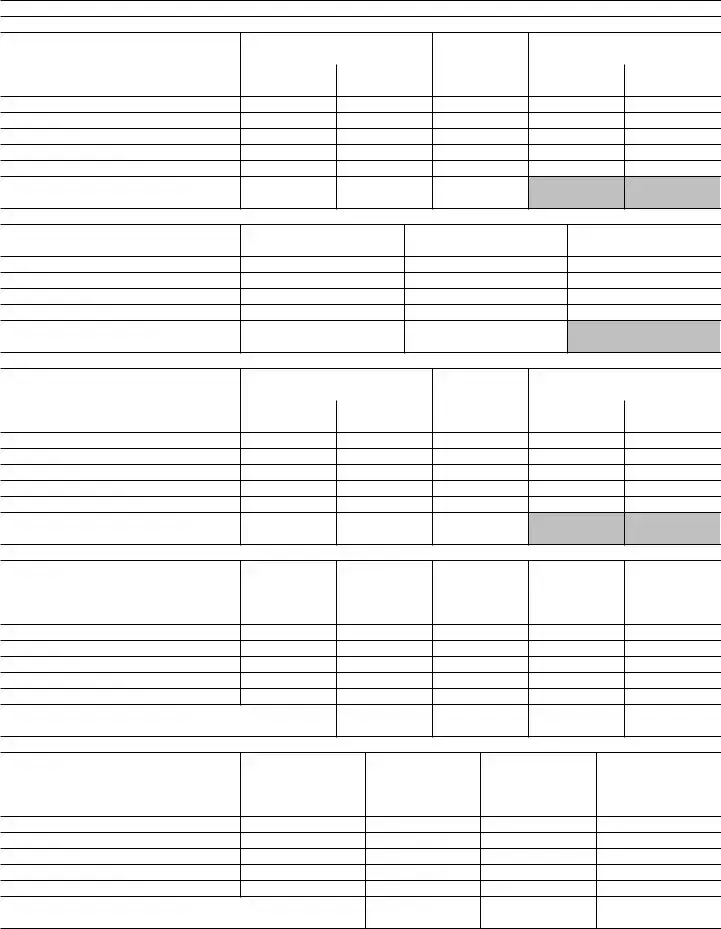The IRS 8582 form, utilized for reporting passive activity loss limitations, bears similarity to the IRS Schedule E (Form 1040). Schedule E is employed by taxpayers to report income and losses from rental property, royalties, partnerships, S corporations, estates, and trusts. Both forms deal with income from passive activities, yet while IRS 8582 specifically focuses on the losses and their limitations, Schedule E provides a broader overview of income and losses from real estate and other passive activities.
Form 4562, Depreciation and Amortization, also shares commonalities with IRS 8582. Form 4562 is used by taxpayers to claim depreciation on property or amortization on assets, which can affect passive activity income or losses. Both forms are integral to calculating the taxable income from business or rental properties, especially when assets are involved that depreciate over time.
The IRS Form 4797, Sales of Business Property, has parallels with the IRS 8582. This form is relevant for taxpayers who sell or exchange business property and need to report gains or losses. Similar to the 8582, it has implications on the income reported from passive activities, especially when the sale of an asset involved in a passive activity leads to a loss or gain that affects the taxpayer's overall income scenario.
IRS Form 8586, Low-Income Housing Credit, is somewhat synonymous with IRS 8582 in its niche focus. While Form 8582 deals with the limitations on passive activity losses, Form 8586 is for claiming the low-income housing credit, which can influence the income from rental properties, a common type of passive activity. Both forms play a role in the tax treatment of income derived from real estate.
Form 6251, Alternative Minimum Tax—Individuals, is interrelated with the IRS 8582 form. Taxpayers use Form 6251 to calculate and report alternative minimum tax (AMT), which might be required if deductions and credits lower their tax bill substantially. Since passive activity losses reported on IRS 8582 can be a significant deduction for some taxpayers, it may influence their AMT calculations, making these forms connected in the tax preparation process.
IRS Form 8863, Education Credits (American Opportunity and Lifetime Learning Credits), although focusing on deductions for education, indirectly connects with IRS 8582. The rationale is that passive activity losses may adjust adjusted gross income (AGI), which in turn, can affect eligibility for education credits. Taxpayers must be mindful of how losses reported on Form 8582 impact their overall income, potentially influencing their qualification for educational tax benefits.
Form 5329, Additional Taxes on Qualified Plans (Including IRAs) and Other Tax-Favored Accounts, shares an indirect relationship with IRS 8582. This form is used to report additional taxes on IRAs or other tax-favored accounts but is influenced by the taxpayer's AGI, affected by passive activity loss limitations. Therefore, the amount of loss reported on IRS 8582 can impact the calculations on Form 5329, connecting these seemingly disparate forms.
IRS Form 1040, U.S. Individual Income Tax Return, is directly correlated with IRS 8582. Essentially, all forms related to income, deductions, and credits funnel into the Form 1040, the main tax return form for individuals. Passive activity loss limitations reported on Form 8582 adjust the AGI on Form 1040, illustrating a direct link in how passive activities affect the overall tax liability.
Form 2441, Child and Dependent Care Expenses, also ties back to IRS 8582, albeit more loosely. The form allows taxpayers to claim credit for child and dependent care expenses, which is calculated based on AGI. Since passive activity losses can alter AGI, there's a consequential effect on the eligibility and amount of credit one can claim on Form 2441, showing the interconnectedness of these tax documents.
IRS Form 8962, Premium Tax Credit, rounds out the list. This form is for claiming the premium tax credit, a refundable credit that helps eligible individuals and families cover the premiums for their health insurance purchased through the Health Insurance Marketplace. Similar to some other credits and deductions, the premium tax credit calculation is influenced by the taxpayer's AGI, which can be affected by the reporting of passive activity losses on IRS 8582. This demonstrates how various aspects of an individual's tax situation are intertwined, with passive activity losses playing a pivotal role.



